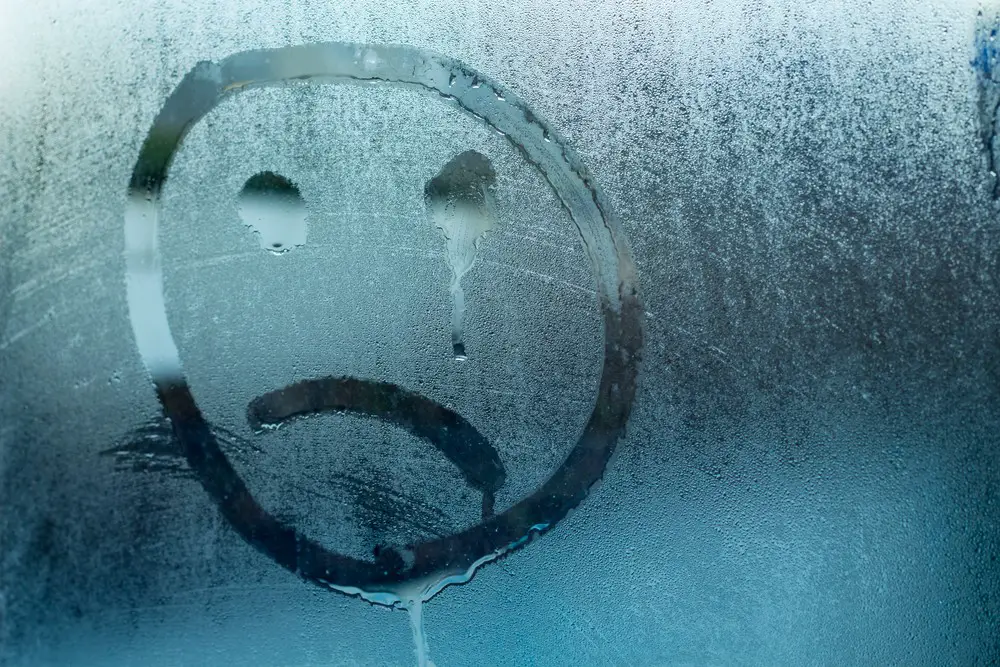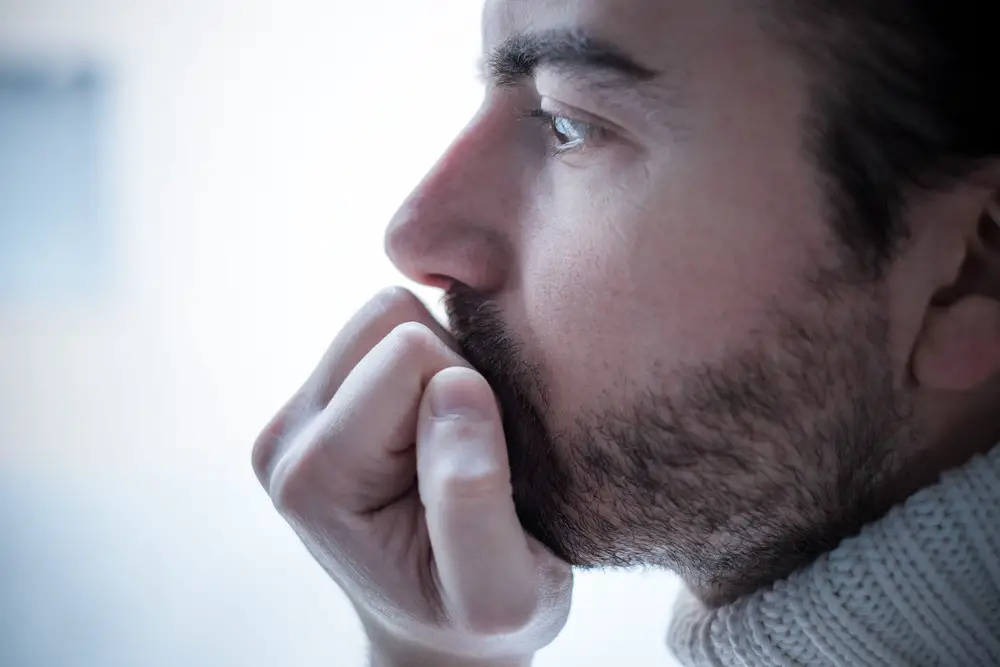As a BetterHelp affiliate, we receive compensation from BetterHelp if you purchase products or services through the links provided
Anxiety is more than just feeling stressed or worried. It’s a mental health disorder that affects many people in different ways. No matter your age, gender, or cultural background, anxiety can significantly impact your life. Some people may experience anxiety so severe that it interferes with their daily activities, including work or school.
While most know the mental anxiety symptoms that encompass this mental health disorder, many don’t know that anxiety can also have a physical manifestation. Unless you know that you have anxiety, you may not realize that your physical symptoms result from an underlying mental health condition.
Physical sensations resulting from anxiety can increase your anxiety even more, especially if you suffer from health anxiety. Understanding and recognizing the common physical symptoms of anxiety will help you to manage your anxiety and make you more aware of when it is happening.

1. Feeling Cold When Anxious
If you’ve ever felt cold when anxious, you’re not alone. Many people with anxiety report feeling cold all the time, even when it’s warm out, and it is often referred to as anxiety chills.
Anxiety chills are caused by the body’s fight-or-flight response, constricting blood flow to the extremities to prepare for action.
You might feel shivery or have chills, even if it’s a warm day or you’re wearing extra layers. This physical symptom is often accompanied by mental anxiety symptoms such as difficulty concentrating, racing thoughts, and feelings of dread.
Feeling cold or shivery when experiencing a panic attack is very common and can be overwhelming. Remember that this symptom is caused by your body’s response to stress and will pass once the anxiety episode has passed.
Some may experience the other end of the spectrum and feel unusually hot, mainly when nervous about something. Hot flashes or hot flushes, sometimes called, are caused by an increase in the body’s temperature when it is under stress.
It’s important to remember that hot and cold sensations caused by anxiety are common symptoms and don’t necessarily point to any sort of illness.
2. Tightness in the Chest
Another common physical symptom of anxiety is tightness in the chest. This sensation occurs as a result of increased oxygen demand due to hyperventilation. It can also be caused by muscle tension in the chest.
Some people with anxiety may mistake this sensation for a heart attack, increasing their anxiety even more. If you experience tightness in your chest due to an anxious episode, it’s important to remind yourself that it is not dangerous and will pass once the anxiety subsides. It is essential to recognize the signs of a heart attack and seek medical help if necessary.
Many anxiety sufferers find that deep breathing helps to control the sensations and reduce the tightness in their chest.
3. Shortness of Breath
Shortness of breath is closely related to chest tightness and hyperventilation. It occurs when your breathing becomes shallow and rapid, leading to a feeling of not being able to breathe enough air. It can also cause lightheadedness or dizziness due to the lack of oxygen.
If you experience shortness of breath when anxious, try to focus on your breathing. Deep and slow breaths can help to reduce the feeling of not being able to get enough air.
The rule of 3 works well for this symptom – inhale for 3 seconds, hold your breath for 3 seconds, and then exhale slowly for 3 seconds. This technique can help to slow down your breathing and reduce shortness of breath.
3. Tingling or Numbing Sensations
Anxiety can often cause tingling or numbness in the extremities, such as the hands, feet, arms, and legs. This sensation is caused by the body’s fight-or-flight response which increases blood flow to the major muscles in preparation for action.
People might as experience a pins-and-needles sensation or feel as if their hands and feet are going numb. This is entirely normal and will pass once the anxiety has subsided.
In the meantime, it can be helpful to use distraction techniques such as playing music or engaging in an activity you enjoy. It may also help to shake your arms and legs to encourage blood flow and reduce the tingling sensation.
4. Stomach Upset
Anxiety can also cause digestive issues such as stomach aches, nausea, indigestion, or diarrhea. This symptom is due to increased levels of cortisol in the body which can upset your stomach and make it hard to keep food down.
If you experience digestive issues when anxious, it can help to focus on calming activities such as deep breathing or meditation. Eating smaller meals more frequently and avoiding caffeine and alcohol may also help to reduce stomach upset. If the problem persists, it’s essential to see a doctor for further advice.
It will help to avoid food high in fat and sugar when feeling anxious. Additionally, drink plenty of water to help your body’s digestion process.
5. Why Does Anxiety Cause Physical Symptoms?
Anxiety can cause various physical symptoms due to the body’s fight-or-flight response. This is a normal reaction that occurs when we are faced with a stressful or dangerous situation and causes us to become alert and ready for action.
The fight-or-flight response triggers several physiological changes in the body, such as increased heart rate, elevated blood pressure, and shallow breathing. These changes can lead to physical symptoms such as chest tightness, shortness of breath, tingling sensations, or stomach upset.
These physical symptoms are an entirely normal reaction to anxiety and do not necessarily mean something is wrong with your body. It’s important to remember that these sensations will pass once the anxiety subsides.
When to See a Doctor For Your Anxiety Symptoms
It is important to note that anxiety can signify an underlying medical condition, such as heart disease or thyroid problems. If you are experiencing severe physical symptoms alongside extreme worry and fear, you must seek medical help.
Your doctor may suggest lifestyle changes such as exercise or relaxation techniques, or they may recommend medication or therapy if appropriate. Taking care of your mental and physical health is essential, so don’t be afraid to seek help if you are struggling with anxiety.
It’s also important to remember that everyone experiences anxiety differently, and what works for one person might not work for another. If you find that the techniques and strategies you are using to manage your stress aren’t working, it might be helpful to speak to a counselor or therapist for further advice.
Conclusion: Recognizing the Physical Symptoms of Anxiety
Experiencing anxiety is a stressful situation for anyone, and the presence of physical symptoms can make it even more challenging to manage.
Feeling cold when anxious and other physical symptoms are part of the body’s fight-or-flight response and can be managed with lifestyle changes and relaxation techniques.
However, if your physical symptoms become severe or persistent, it is essential to seek medical advice as soon as possible. Everyone experiences anxiety differently, so it’s important to remember that different strategies might work for different people. With the proper support and understanding, it is possible to manage your anxiety symptoms and live a happy, healthy life.




